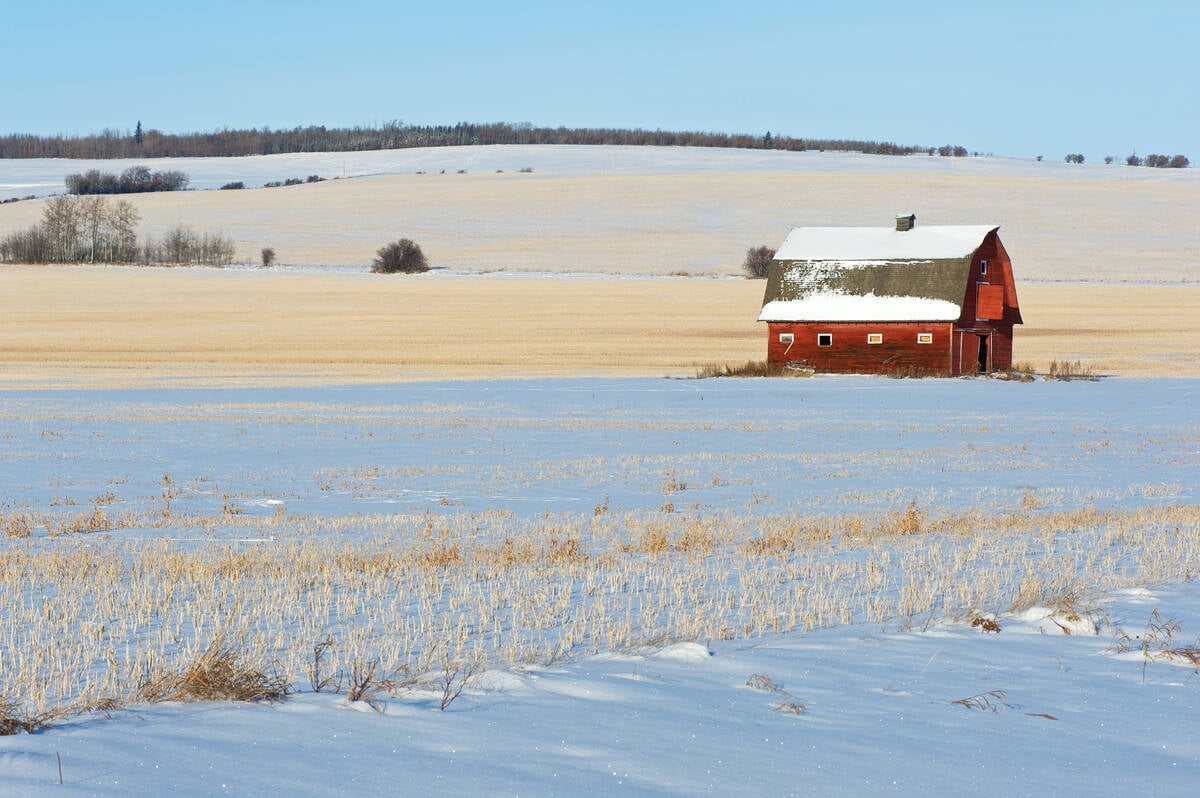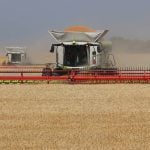Broadcast seeding, the option of last resort, could become the only option left to farmers struggling with wet fields and rainy forecasts.
Extension officials don’t recommend the strategy, whether by air or floater, but with time running out, they’re offering their best advice for how to make it work.
As of May 25, some farmers in southwestern Manitoba had only 10 per cent of their land sown, Lionel Kaskiw, a farm production adviser with Manitoba Agriculture, Food and Rural Initiatives (MAFRI) based in Souris, said during a webinar.
Read Also

Prairie forecast: Plenty more chances for snow over Holidays
The pattern of Pacific storm system after Pacific storm system looks set to continue for a while longer. We begin this forecast period with a heavy snowfall warning in effect across parts of Alberta.
Kaskiw said canola is one of the better crops to broadcast. But because seed placement won’t be ideal, he recommends boosting the seeding rate by at least one pound an acre.
Farmers who broadcast seed will likely have to do the same with their fertilizer. Ideally, the seed and fertilizer will be stored separately during application. If not, it’s important to apply the seed-fertilizer blend as quickly as possible to avoid damaging the seed and reducing germination, Kaskiw said.
Broadcasting is the least efficient way to apply fertilizer. Farmers should boost their phosphorus or they risk it being too far from the seed for the nutrient to be taken up by the plant.
Harrowing immediately after broadcasting will reduce the chances of losing nitrogen due to volatilization, especially when it’s warm and windy.
Ideally, the field should be harrowed before broadcasting, especially if there’s a lot of crop residue. Breaking straw and chaff up makes for better soil-to-seed contact. Even then, rain will probably be necessary to germinate some of the seed, especially in areas that are drier.
Adjust applications
As seeding gets later, farmers should reassess their yield potential and adjust their fertilizer application accordingly, he said. There’s no point fertilizing for a yield that’s unlikely to be achieved. Canola seeded by the first week of June has lost 10 to 15 per cent of its yield potential.
If the crop is looking good farmers can apply more fertilizer later if they believe it’s justified.
Broadcast seeding is likely to result in plants that aren’t as well rooted, Kaskiw said. As a result they could be knocked over by rain or wind later in the growing season.
That’s why broadcast seeding isn’t recommended for sunflowers. It can also be a problem with cereal crops.
Since quality will probably be reduced, it’s better to broadcast barley and oats that can be used for livestock feed instead of milling wheat, he said.
Broadcasting isn’t advised for crops treated with inoculants, such as soybeans, because if the seed isn’t covered in soil the inoculant won’t work, Kaskiw said.
Insurance concerns
Before a crop that is broadcast can be insured, the stand must appear good enough to match the farmer’s insurance coverage, he said.
Where seeding has been delayed weeds are getting bigger making a pre-plant burnoff with glyphosate more important than ever, Kaskiw said.
“If you’re going to get a crop in the ground get a burn-off done because the value from $3-a-litre Roundup to get some of those hard-to-kill weeds right now is going to pay big time,” he said. “Later on some of those weeds will be way too big (to kill).”
Some farmers are considering leaving volunteer canola crops to produce a crop, but Kaskiw said that’s unwise.
“A volunteer crop never yields as well as a sown crop and it never will,” he said.
The problem is, some parts of the field have too few volunteers and others too many. Some areas will have 50 to 60 plants per square foot when four to six is what’s recommended and you can’t thin it out.
“What you’re going to get is a lot of spindly plants that are competing against each other so one is a weed to the other one,” Kaskiw said.
However, a volunteer crop is probably better than no crop at all.
Volunteers
Although Kaskiw didn’t refer to it, if a volunteer canola crop comes from a hybrid, the next generation will not be uniform or as vigorous.
There are also disease concerns, especially if the field was seeded to canola last year, Anastasia Kubinec, MAFRI’s oilseed specialist, said in an interview last week. If the field was infected with blackleg last year the volunteer crop will almost certainly be infected this year.
If the parent crop was Roundup Ready the farmer is legally obliged to get permission from Monsanto to grow it and could be asked to pay a fee for using Monsanto’s technology, Kaskiw said.
Monsanto spokesman Trish Jordan said the firm is considering whether to allow farmers to take a volunteer crop to harvest. It was allowed last year. Farmers were required to register with the company and pay the technology fee.
— Allan Dawson is a reporter with the Manitoba Co-operator at Miami, Man. Article from Manitoba Co-operator, June 2, 2011, page 17.















